
Venice is a city in northeastern Italy and the capital of the Veneto region. It is built on a group of 118 small islands that are separated by canals and linked by over 400 bridges. The islands are in the shallow Venetian Lagoon, an enclosed bay lying between the mouths of the Po and the Piave rivers. In 2020, around 258,685 people resided in greater Venice or the Comune di Venezia, of whom around 55,000 live in the historical island city of Venice and the rest on the mainland (terraferma). Together with the cities of Padua and Treviso, Venice is included in the Padua-Treviso-Venice Metropolitan Area (PATREVE), which is considered a statistical metropolitan area, with a total population of 2.6 million.

A masquerade ball is an event in which many participants attend in costume wearing a mask. Less formal "costume parties" may be a descendant of this tradition. A masquerade ball usually encompasses music and dancing. These nighttime events are used for entertainment and celebrations.

The Treaty of Campo Formio was signed on 17 October 1797 by Napoleon Bonaparte and Count Philipp von Cobenzl as representatives of the French Republic and the Austrian monarchy, respectively. The treaty followed the armistice of Leoben, which had been forced on the Habsburgs by Napoleon's victorious campaign in Italy. It ended the War of the First Coalition and left Great Britain fighting alone against revolutionary France.
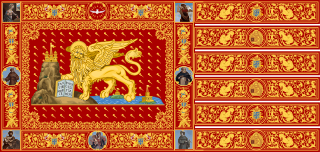
The Republic of Venice or Venetian Republic, traditionally known as La Serenìsima, was a sovereign state and maritime republic in parts of present-day Italy which existed for 1100 years from 697 AD until 1797 AD. Centered on the lagoon communities of the prosperous city of Venice, it incorporated numerous overseas possessions in modern Croatia, Slovenia, Montenegro, Greece, Albania and Cyprus. The republic grew into a trading power during the Middle Ages and strengthened this position during the Renaissance. Citizens spoke the still-surviving Venetian language, although publishing in (Florentine) Italian became the norm during the Renaissance.

The War of the League of Cambrai, sometimes known as the War of the Holy League and several other names, was fought from February 1508 to December 1516 as part of the Italian Wars of 1494–1559. The main participants of the war, who fought for its entire duration, were France, the Papal States, and the Republic of Venice; they were joined at various times by nearly every significant power in Western Europe, including Spain, the Holy Roman Empire, England, the Duchy of Milan, the Republic of Florence, the Duchy of Ferrara, and the Swiss.

The siege of Candia was a military conflict in which Ottoman forces besieged the Venetian-ruled city. Lasting from 1648 to 1669, or a total of 21 years, it is the second-longest siege in history after the siege of Ceuta; however, the Ottomans were ultimately victorious despite Candia's resistance.

Andrea Gritti was the Doge of the Venetian Republic from 1523 to 1538, following a distinguished diplomatic and military career. He started out as a successful merchant in Constantinople and transitioned into the position of Bailo, a diplomatic role. He was arrested for espionage but was spared execution thanks to his good relationship with the Ottoman vizier. After being freed from imprisonment, he returned to Venice and began his political career. When the War of the League of Cambrai broke out, despite his lack of experience, he was given a leadership role in the Venetian military, where he excelled. After the war, he was elected Doge, and he held that post until his death.

The naval Battle of Zonchio took place on four separate days: 12, 20, 22, and 25 August 1499. It was a part of the Ottoman–Venetian War of 1499–1503.

The Carnival of Venice is an annual festival held in Venice, Italy. The carnival ends on Shrove Tuesday, which is the day before the start of Lent on Ash Wednesday. The festival is world famous for its elaborate masks.
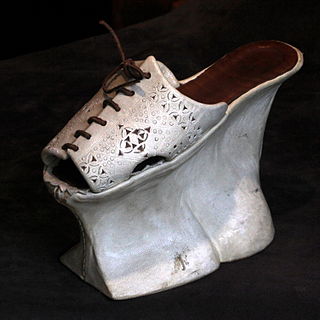
A chopine is a type of women's platform shoe that was popular in the 15th, 16th and 17th centuries. Chopines were originally used as a patten, clog, or overshoe to protect the shoes and dress from mud and street soil.
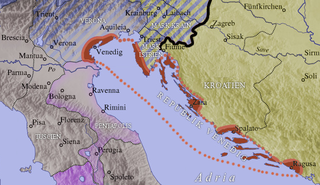
The Republic of Venice was a sovereign state and maritime republic in northeastern Italy, which existed for a millennium between the 8th century and 1797.

Ludovico Giovanni Manin was a Venetian politician, patrician, and the 120th and last Doge of Venice. He governed the Venetian Republic from 9 March 1789 until its fall in 1797, when he was forced to abdicate by Napoleon Bonaparte.
The Masque of Beauty was a courtly masque written by Ben Jonson, and performed in London's Whitehall Palace on 10 January 1608. It inaugurated the refurbished banquesting hall of the palace. It was a sequel to the preceding Masque of Blackness, which had been performed three years earlier, on 6 January 1605. In The Masque of Beauty, the "daughters of Niger" of the earlier piece were shown cleansed of the black pigment they had worn on the prior occasion.
Love Freed from Ignorance and Folly was a Jacobean era masque, written by Ben Jonson and designed by Inigo Jones, with music by Alfonso Ferrabosco. It was performed on 3 February 1611 at Whitehall Palace, and published in 1616.

The Republic of San Marco or the Venetian Republic was an Italian revolutionary state which existed for 17 months in 1848–1849. Based on the Venetian Lagoon, it extended into most of Venetia, or the Terraferma territory of the Republic of Venice, suppressed 51 years earlier in the French Revolutionary Wars. After declaring independence from the Habsburg Austrian Empire, the republic later joined the Kingdom of Sardinia in an attempt, led by the latter, to unite northern Italy against foreign domination. But the First Italian War of Independence ended in the defeat of Sardinia, and Austrian forces reconquered the Republic of San Marco on 28 August 1849 following a long siege.
Pierre Billon was a French film director and screenwriter. In 1952 he served on the jury of the Cannes Festival.
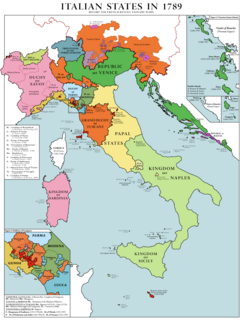
The fall of the Republic of Venice was a series of events that culminated on 12 May 1797 in the dissolution and dismemberment of the Republic of Venice at the hands of Napoleon Bonaparte and Habsburg Austria.

Nicolò Molin (1562-1608) was a Venetian noble and ambassador to England.
Zorzi Giustinian was an ambassador of the Republic of Venice serving in London from 1606 to 1608 and Vienna in 1618.
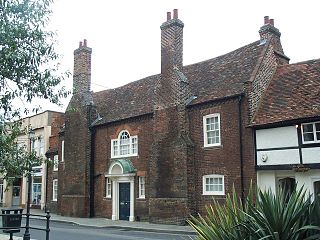
Marc' Antonio Correr (1570-1638) was a Venetian nobleman and ambassador at the Stuart court.
















